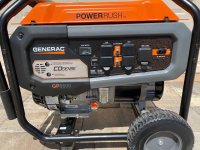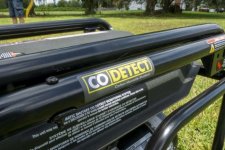Ok so new question.... is the need for a inverter type hype as some have posited in this thread? I want to run the router for internet and the tv. Since we live in an area prone to tornados keeping up on those issues is important. I do have a place I can keep the generator out of the weather and still running and hooked up to the house.
SPECS, it's about AC specs, equipment is designed to run according to power grid specs. Power Companies can not buy, sell, transfer power between companies without being synchronized. This is why wind turbines and solar farms go down if purchasing utility has a power or substation failure.
60Hz is the US standard, at 58Hz A/C motors run a little slower, at 62Hz A/C motors run a little faster - power can't be sold if out of sync.
Sine wave - the voltage switches between -170 volts and +170 volts 60 times per second. Regular generators and true sine wave inverters will generate this waveform.
RMS - root mean square is the average of the voltage swing. Usually 120 volts, inside of a power plant I have measured 140-145 volts at their outlets.
Typical inverters generate a stair stepped wave form. The more steps, the better the inversion waveform.
My pellet stove is plugged into a UPS for computers. On power failure it beeps and provides about 10 min. of runtime. The motors will run on the stepped wave form but makes more noise, motor speeds up & slows down because of the stepped voltage. Kind of like driving a car with a vibrator on the bottom of your shoe.
Any generator producing between 110-130 volts should be fine. Dedicated generators with own motor will do best job of maintaining 60Hz. My main concern is waveform. AC power is a sine wave, a true sine wave or a highly stepped wave form waveform is the best.


